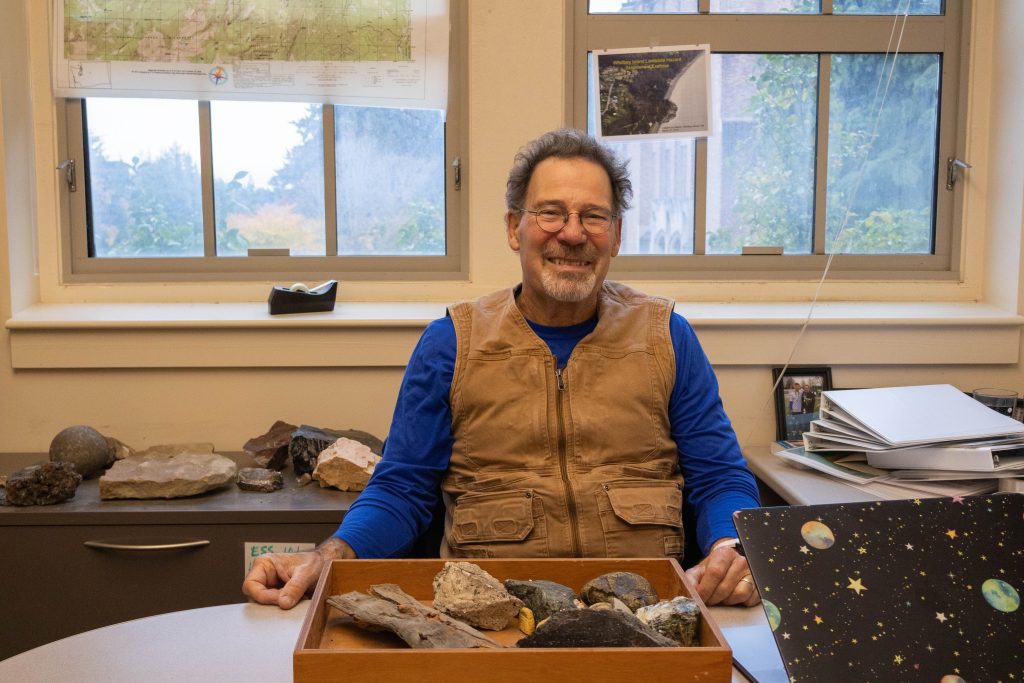Saturn’s biggest moon might not have a global ocean — but the search for life isn’t over
More than a decade ago, data from the Cassini mission to Saturn suggested that the planet’s largest moon, Titan, had a vast ocean of liquid water below its frozen surface. In a new study, ESS researchers teamed up with NASA scientists to show that the interior is likely composed of slushy layers instead.
Read the full story on UW NewsTelecom Cables Measured an Earthquake in Incredible Detail
ESS Assistant Professor Brad Lipovsky is quoted.
Read more on Scientific AmericanNine Alaska seismic stations to go dark in January, slowing West Coast tsunami alerts
The National Oceanic and Atmospheric Administration (NOAA) ended funding for nine seismic stations, mainly in the seismically active Aleutian Islands, creating a geographic cap that could delay Washington's tsunami warnings and shorten evacuation windows. PNSN Director Harold Tobin remains confident that distant seismometers will eventually detect any quakes. While there is no need to panic about these stations going offline, UW coastal hazards specialist and ESS alumna Carrie Garrison-Laney advises caution, urging attention to long-term funding trends that threaten tsunami preparedness. The Alaska Earthquake Center is engaged with NOAA to find a solution.
Read more at KUOWUW team from Pacific Northwest Seismic Network installs equipment near Mt. Rainier
In late August at Burley Mountain, a team from the Pacific Northwest Seismic Network installed equipment to detect ground movement. This seismic station joined more than 700 others in the network spanning Washington and Oregon monitoring shaking from earthquakes and volcanic eruptions. PNSN Director Harold Tobin is quoted.
Read more at UW MagazineESS Professor Eric Steig introduces UW to the magic of ice cores
The College of the Environment's Program on Climate Change (PCC) is hosting a free, interdisciplinary colloquium each month this academic year. ESS Professor Eric Steig was the third lecturer.
Read more on The Daily UWIn a new documentary, UW researchers investigate when Greenland was ice-free
“The Memory of Darkness, Light and Ice” — a documentary film featuring Eric Steig, a UW professor of Earth and space sciences — tells the story of a U.S. military and research base established in Greenland during the Cold War, and how the samples collected there are driving modern climate science.
Read more on UW News50,000 students and counting: Professor Terry Swanson’s 34 years teaching ESS 101
ESS Teaching Professor Terry Swanson has taught ESS 101 Introduction to Geology and Societal Impacts, or "Rocks for Jocks" for 34 years, reaching over 50,000 students. Swanson is interviewed by The Daily UW. "When I stop loving it, I won't teach it. I still go into the classroom as enthusiastic as I was in 1992."
Read more on The Daily UWHow ripples in the high atmosphere warned scientists of a tsunami in real time
Harold Tobin, ESS professor and PNSN director, is quoted.
Read more at BBCESS alumna awarded Geological Society of America's prestigious Donath Medal for pioneering Earth science research
ESS alumna and Indiana University Bloomington Assistant Professor Dr. Julia Kelson was awarded the Geological Society of America’s 2025 Young Scientist Award. Kelson got her Ph.D. from UW Earth and Space Sciences in 2019, advised by Professor Kate Huntington.
Read more at Indiana University NewsBaptiste Journaux awarded annual IAPWS Helmholtz award
ESS Assistant Professor Dr. Baptiste Journaux was recognized this past summer with the International Association for the Properties of Water & Steam’s Helmholtz Award.
Read more

